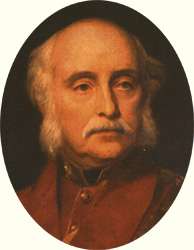Manchester, Bury and Rossendale Railway
| Industry | Railway company |
|---|---|
| Fate | Amalgamation |
| Successor | East Lancashire Railway |
| Founded | 1844 |
| Defunct | 24 July 1845 |
| Headquarters | Greater Manchester and Lancashire |
The Manchester, Bury and Rossendale Railway, opened in 1846, ran between the towns of Clifton and Bury in what is now Greater Manchester, and the district of Rossendale in Lancashire, England. The company merged with the Blackburn, Burnley, Accrington & Colne Extension Railway (BBA&CER) to form the East Lancashire Railway.
History

In the early 1840s the nearest railway to Bury was the Manchester and Bolton Railway, at its closest through Stoneclough almost 4.5 miles distant. This railway company had initially proposed to create a branch to Bury, but technical difficulties meant that the connection never materialised.[2]
On 14 September 1843 a group of local businessmen, including John Grundy, Thomas Wrigley and John Robinson Kay met at a hostelry in Bury to discuss the creation of a railway connection for the town. The Manchester, Bury and Rossendale Railway Company was formed, its purpose to build a railway from Bury to a junction with the Manchester and Bolton Railway at Clifton. The company also promoted the idea of extending the line northwards to Rawtenstall.[2] In 1844 the company was incorporated by act of parliament, which authorized it to raise £300,000, and to borrow £100,000.[3]
Route

Charles E. Cawley was appointed Chief Engineer, who instructed his recently appointed assistant Frederick Banister to set out the first few miles.[4] The proposed route through the Irwell Valley was then approved by Chief Inspector of Railways Major General Sir Charles W. Pasley on 23 September 1846.
The railway began from a junction with the Manchester and Bolton Railway, in Clifton. It ran northeast through Molyneux Brow, Ringley Road, Radcliffe Bridge, Withins,[5] and into Bury Bolton Street. Construction was completed quickly; William Harrison wrote "The railway was speedily completed and was opened for traffic on 28th September 1846", however men were asked to work on Sunday, and several were charged with breaking Sabbath.[6]
Extension
Another company, the Burnley, Accrington & Colne Extension Railway, proposed to extend the line from Stubbins Junction to meet the Preston to Burnley route at Accrington. The two companies joined on 24 July 1845 to form the East Lancashire Railway[7]
Banister was placed in charge with designing, surveying and gaining the necessary UK Parliament approval to extend the line, which hence became part of the Lancashire and Yorkshire Railway.[4] Due to persistent health issues, after gaining parliamentary approval Banister left the project and construction was undertaken by engineers from the L&YR.[4]
References
- ↑ Vetch, R. H.; Sweetman, John (2004), Pasley, Sir Charles William (1780–1861) (Registration required), Oxford Dictionary of National Biography, Oxford University Press, retrieved 2009-04-13
- 1 2 Wells 1995, p. 3.
- ↑ House of Commons 1847, p. 32.
- 1 2 3 "Federick Dale Banister". GracesGuide.co.uk. Retrieved 10 February 2013.
- ↑ Withins station closed in 1851
- ↑ Wells 1995, pp. 3–4.
- ↑ By an Act of Parliament
- Bibliography
- Wells, Jeffrey (1995), An Illustrated Historical Survey of the Railways in and Around Bury, Challenger Publications, ISBN 1-899624-29-5
- House of Commons (1847), Parliamentary Papers, HMSO
| Wikimedia Commons has media related to East Lancashire Railway 1845–1859. |